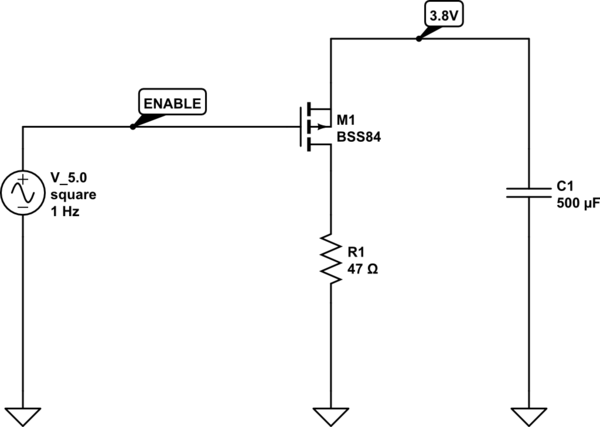I need to discharge a power rail from 3.8V to 0V within 200ms. The control signal is active low (i.e. start discharging when control becomes low). I think the easiest implementation probably is to use NFET and invert the control signal to feed the gate. That means I need an inverter + NFET. Any single IC that can achieve this function?
In detail, the control signal comes from a watchdog timer, which is powered by a different power supply. The signal will hold low ~200ms and disable 3.8V regulator meanwhile, and then go back high and enable the regulator again. I plan to use this signal to discharge the 3.8V rail at the same time. I can't use PFET because it will stop discharge (~0.7V) when Vgs<-Vt. My concern is if I don't discharge the rail to GND, I am not sure if the logic circuits can power up to the right states every time the power is cycled. Can these residue voltages inside the ICs cause, say, latch up or other unintentional shorts? Thanks.

